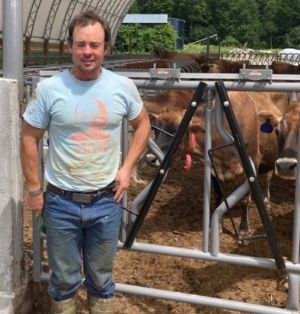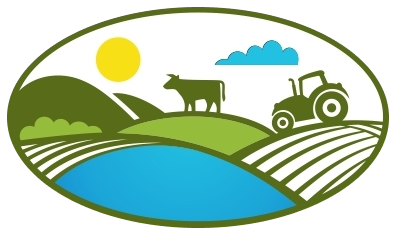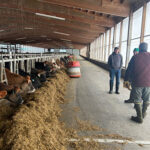
Caleb Smith operates a small farm, Dorset Peak Jerseys, in the Rutland County town of Danby. The 325-acre farm is located above 1,200 feet in elevation. The farm’s production area is nestled into a wooded hillside with a northeast aspect. Caleb works mostly by himself, so capital invested wisely to make his days more productive and to achieve water quality improvements is important to him.
Caleb’s farm is in the Otter Creek watershed, near the headwaters of the river. The Otter Creek, the longest river in Vermont, flows north through Rutland, Brandon, Middlebury, and Vergennes before flowing into Lake Champlain.
To that end, Caleb has worked with the United States Department of Agriculture-Natural Resources Conservation Services (USDA-NRCS) in their Middlebury and Rutland offices to execute a significant Environmental Quality Incentives Program (EQIP) contract. In the last 18 months, Caleb has used this grant to construct a 500,000 gallon Slurrystore, into which all manure, barnyard runoff, and milkhouse waste are collected. In addition, a hoop-style covered barnyard now houses all the heifers and dry cows. All waste from this area is also being contained in the Slurrystore. This was a considerable change from the daily field stacking of manure that occurred in the past. The end of daily field stacking has resulted in more time for Caleb to manage other aspects of running his dairy farm. When it came to spreading, “the contractor did the whole job in less than two days,” said Caleb, while he was able to spend that time on other important jobs on the farm.
Caleb has been very progressive in his field management, too. He has used no-till techniques for more than eight years, coupled with cover cropping. He grows about 70 acres of corn and selects varieties around 90 days in relative maturity. He plans on being done chopping by the end of September. As Caleb puts it, chopping in October is akin to having a “root canal.” On his hay land, Caleb has tried different grass and forage varieties in his fields to find out what best suits his location, soils and climate. At the present time he is using a meadow fescue, clover, and perennial ryegrass mixture. He has tried annual ryegrass which gave good results, but was expensive to plant. Feed is stored in tubular “ag bags.” Currently, Caleb is also instituting a rotational grazing management program with help from his local NRCS office.




